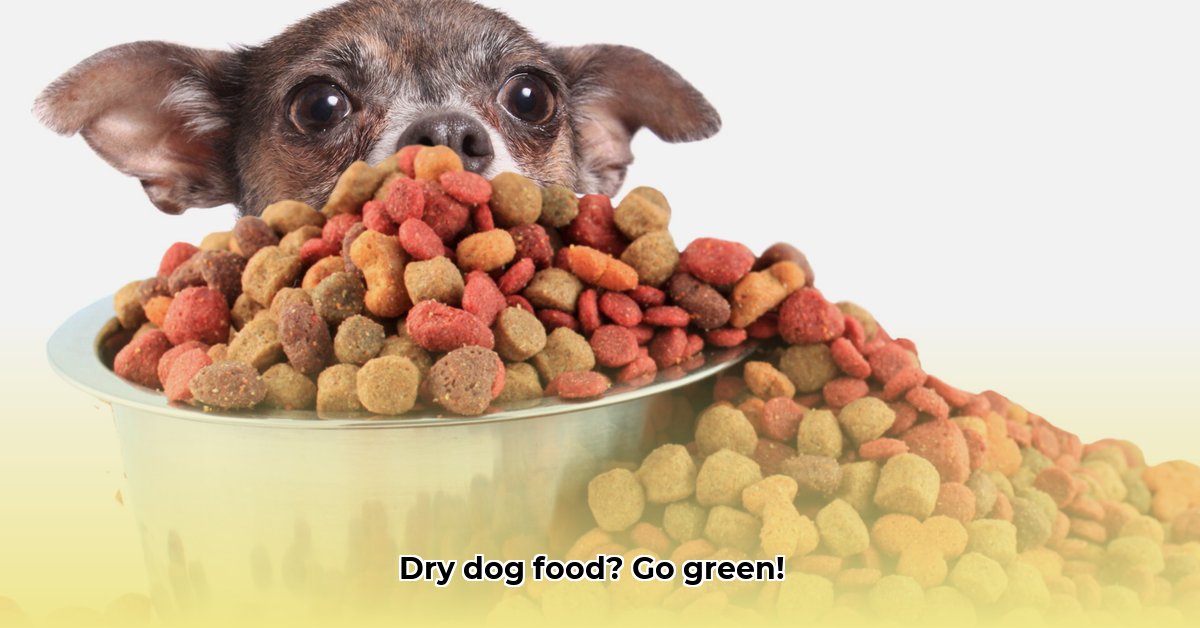
The Environmental Paw Print of Your Pet's Dinner: It's Bigger Than You Think
We love our dogs, and feeding them well is a top priority. But have you considered the environmental impact of that seemingly simple bowl of kibble? The conventional production of dog food, even seemingly straightforward options like dry food from Tractor Supply, carries a surprisingly large environmental footprint. From the fields where ingredients are grown to the factories processing them and the trucks delivering them to stores, the journey of your dog's food leaves a significant mark. How significant? Let's explore the hidden costs. For more on sustainable pet care practices near you, check out this helpful resource.
Traditional dog food production relies heavily on practices that strain our planet's resources. Vast monocultures of grains like corn and wheat, often grown with heavy reliance on pesticides and fertilizers, deplete soil health, contaminate waterways, and diminish biodiversity. This is akin to playing a monotonous single-note song on repeat, instead of the rich symphony of a thriving ecosystem. The water footprint is immense: substantial amounts are needed to irrigate these fields and raise the livestock that often form part of many dog food recipes. Intensive livestock farming, common in meat production for pet food, exacerbates the problem, contributing significantly to greenhouse gas emissions and deforestation. Then, there's the packaging—plastic bags, cardboard boxes—all contributing to landfill waste. Wouldn't it be great to find sustainable solutions, even within the familiar aisles of Tractor Supply?
Rhetorical Question: Considering the environmental impacts outlined, aren’t we obligated to seek out more sustainable options for our beloved pets?
Quantifiable Fact: Intensive livestock farming contributes significantly to greenhouse gas emissions, representing a substantial portion of the overall carbon footprint of conventional dog food.
Sustainable Solutions: Making Kibble Kind to the Planet
The good news is that change is underway! Innovative approaches offer pathways to a more sustainable pet food industry. Several promising avenues are emerging, transforming how we feed our furry friends while safeguarding our planet. Let’s delve into some impactful solutions:
Regenerative Agriculture: This revolutionary farming method focuses on improving soil health rather than depleting it. By employing techniques such as cover cropping and crop rotation, regenerative agriculture sequesters carbon, enhances biodiversity, and reduces the need for synthetic fertilizers and pesticides. This translates to healthier ingredients for your dog's food and a smaller carbon footprint.
Alternative Protein Sources: The traditional reliance on meat in dog food is being challenged by innovative alternatives. Insect protein, for instance, requires significantly less land and water to produce than traditional livestock, resulting in a drastically smaller environmental impact. Single-cell proteins, cultivated in controlled environments, represent another promising avenue, offering a sustainable and scalable protein source that reduces reliance on conventional agriculture. Think of it as a protein revolution for your pet!
Sustainable Packaging: The environmental cost of packaging is not insignificant. However, many companies are embracing biodegradable and compostable packaging materials, reducing our reliance on plastics and minimizing the amount of waste ending up in landfills. This simple yet profound change significantly reduces the environmental burden.
Transparent Sourcing: Knowing precisely where your dog food's ingredients originate is crucial. Brands committed to sustainability embrace transparency, openly sharing details about their supply chains and production processes. Knowing what's in your dog’s food empowers you to make conscious and informed choices.
"The shift toward sustainable pet food is driven by a growing consumer demand for transparency and ethical sourcing,” says Dr. Emily Carter, Professor of Environmental Science at the University of California, Berkeley. "Consumers are increasingly aware of the environmental impact of their choices, and this awareness is extending to their pets' diets.”
Rhetorical Question: With these innovative and effective solutions available, isn’t it time to prioritize sustainability in our pet food choices?
Quantifiable Fact: Insect protein requires significantly less land and water to produce compared to traditional meat sources, resulting in a dramatically lower environmental impact.
Your Power as a Pet Parent: Making a Difference, One Bowl at a Time
As a pet owner, you hold considerable power to drive positive change. Your purchasing decisions are a potent force, shaping the market and encouraging manufacturers to prioritize sustainability. Here's how you can wield this power:
Become a Label Detective: Scrutinize dog food labels for certifications like "organic," "sustainably sourced," or "responsibly produced." These certifications signal a commitment to higher standards.
Practice Portion Control: Avoid overfeeding and properly store your dog's food to minimize waste. Food waste adds to the environmental burden of production.
Support Sustainable Brands: Choose brands that prioritize transparency, ethical sourcing, and environmentally friendly practices. Your purchasing decisions send a clear message to the industry.
Advocate for Change: Contact manufacturers and retailers, expressing your desire for more sustainable options. Collective action amplifies your voice.
Rhetorical Question: If each consumer made a small change, could we collectively create a significant shift toward sustainability in the pet food industry?
Quantifiable Fact: Reducing food waste can significantly reduce the environmental impact associated with pet food production and distribution.
The Future of Sustainable Pet Food: A Bright Horizon
The pet food industry is evolving rapidly. Technological advancements, changing consumer preferences, and stricter regulations are pushing the industry towards a more sustainable future. The journey requires a combined effort – from innovative producers to informed consumers. By prioritizing sustainability in our daily choices, we can improve both our pet's health and the planet's well-being. The future of sustainable pet food is bright, and it hinges on continued research, supportive policies, and, most importantly, the conscious choices we make as pet owners.